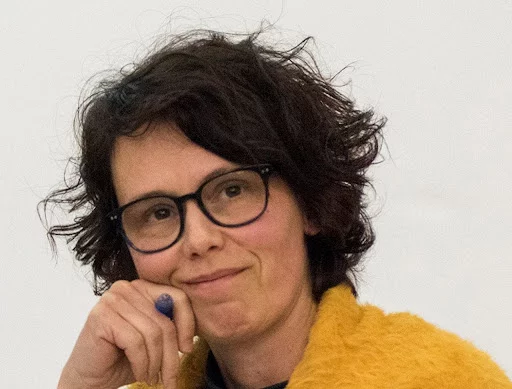Bojana Piškur
Bojana Piškur is a curator at Moderna galerija, Ljubljana. Her work focuses on the Yugoslav and post-Yugoslav context, the Non-Aligned Movement, and cultural solidarities. Since 2019 she has curated the exhibition series Southern Constellations, presented in Ljubljana (2019), Gwangju (2020), Rijeka (2021), Podgorica (2022), Ramallah (2022), Skopje (2022), and London (2023). The most recent edition, Constellations of Multiple Wishes: Along the Eastern Horizon, took place at Moderna galerija, Ljubljana (2024). Her research highlights solidarity projects within the Non-Aligned Movement from the 1960s to the 1980s, including the Ljubljana Biennial of Graphic Arts.

EAST OF EAST: TRAINS AND THE MAKING OF THE EAST
archival materials: documents, photographs, maps, letters,
postcards, booklets, promotional materials and 5 flags (flag
design: Đorđe Balmazović)
Courtesy of the author
Private archives, public archives, and the Palestinian Museum
digital archive
Trains have always been more than just modes of transportation. As infrastructures of empire, war, migration, and development, they have historically shaped both physical territories and perceptions, especially across regions caught between political projects and cultural identities: Eastern Europe, the Balkans, and the Middle East. East of East: Trains and the Making of the East is an ongoing project that examines how railways helped define the concept of "the East." Often viewed through a Western European lens, this region was imagined in gradations: Eastern Europe seen as less eastern than the Balkans, and the Balkans less eastern than the Middle East. Yet the Ottomans, for example, considered the Balkans their western periphery. Railways were not only instruments of state control, economic exploitation, and imperial ambition. They also served as spaces of resistance, sabotage, and escape, sites of disruption as well as survival. The display brings together diverse materials, from railway maps spanning the Middle East, the Balkans and Eastern Europe, to tickets, letters, promotional materials, and photographs, all connected to the entangled histories of the region.